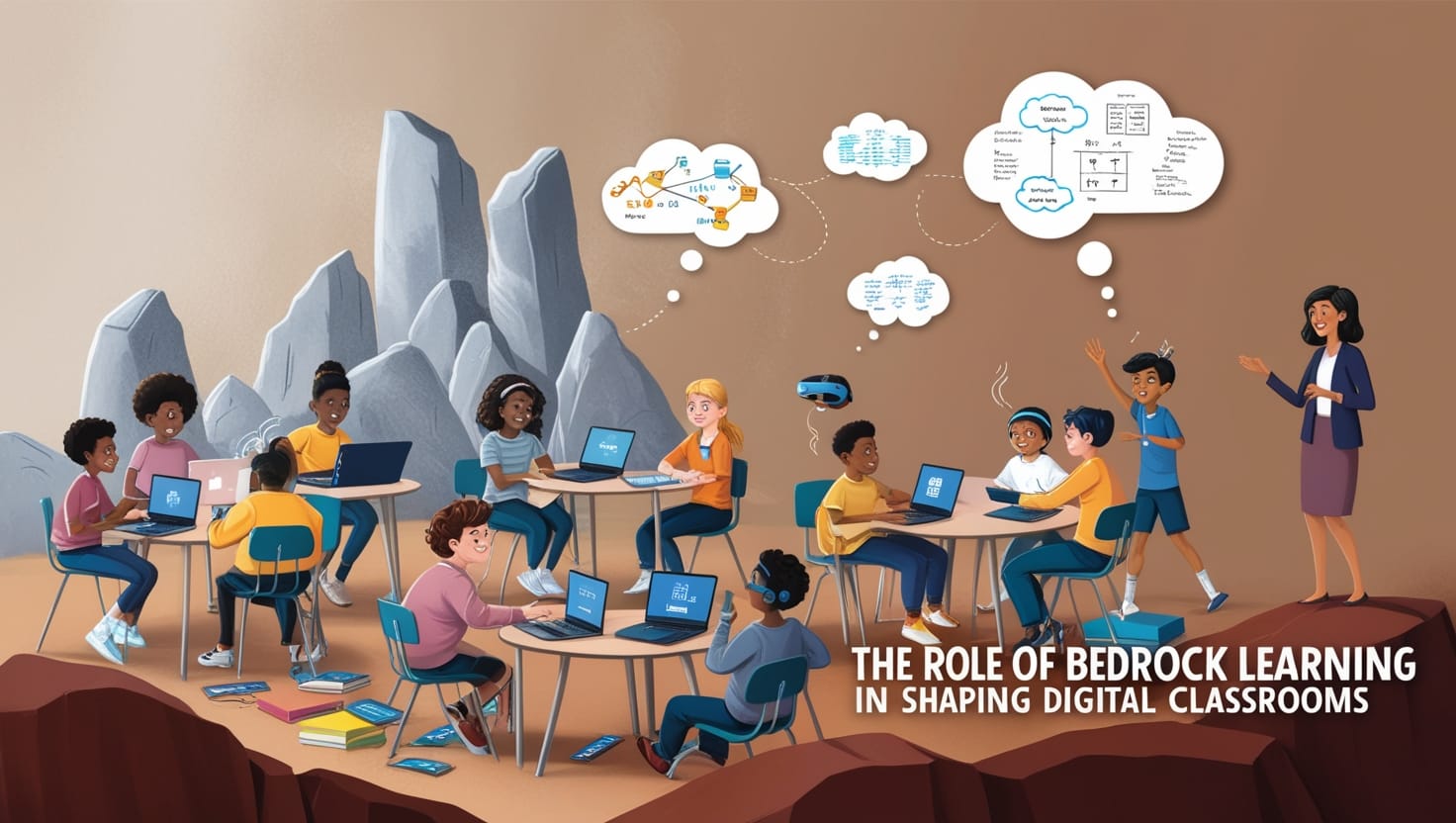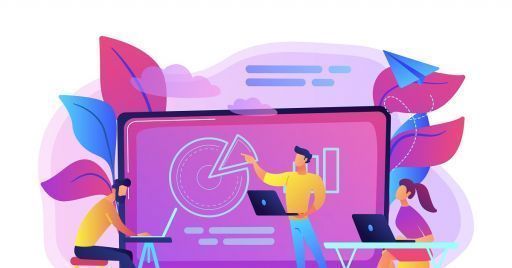
The Role of Bedrock Learning in Shaping Digital Classrooms-As education continues to evolve, so do the tools and technologies that support it. One of the most revolutionary advancements in recent years is the rise of Bedrock Learning, a cutting-edge platform designed to reshape how students engage with digital classrooms. With its adaptive learning technologies and emphasis on interactive, personalized experiences, Bedrock Learning is playing a crucial role in transforming traditional learning environments into dynamic digital spaces. In this article, we’ll explore how Bedrock Learning is shaping the future of digital classrooms and why it’s considered a game-changer in education.
1. Transforming Traditional Learning into Interactive Experiences

Gone are the days when students were passive recipients of information in a traditional classroom setting. Bedrock Learning brings interactivity to the forefront, offering a range of multimedia content, simulations, and gamified lessons that make learning more engaging and practical. In the digital classroom, students are no longer limited to static texts and lectures—they can immerse themselves in virtual environments where they can experiment, solve problems, and apply concepts in real-time.
For instance, students learning about biology can use interactive simulations to explore the human body, while those studying physics can engage in virtual labs to test hypotheses. This hands-on approach makes abstract concepts more accessible and helps students retain knowledge by actively participating in the learning process. Bedrock Learning empowers educators to move away from traditional lecture-based teaching and foster a more engaging and interactive digital classroom environment.
2. Personalizing Learning for Every Student
One of the standout features of Bedrock Learning is its ability to offer personalized learning paths tailored to each student’s unique needs. In digital classrooms, where students can have varying levels of understanding and learning speeds, this feature becomes invaluable. Bedrock Learning uses data-driven algorithms to assess each learner’s progress, strengths, and weaknesses, and then adapts the content accordingly.
This means that students no longer have to wait for others to catch up or feel bored by content that is too easy for them. Instead, each student is given a tailored experience that matches their pace and ability, allowing them to stay challenged while ensuring they grasp the fundamentals. Whether you’re a fast learner who craves more advanced content or a student who needs additional support, Bedrock Learning makes sure that everyone can progress at their own speed, which is a vital element in creating an effective digital classroom. (Read More: Learning Academy Trends in 2024: What’s Shaping the Future of Education?)
3. Supporting Educators with Data-Driven Insights

In a digital classroom, teachers face the challenge of monitoring multiple students, each with their own learning journey. This is where Bedrock Learning truly shines, as it provides educators with powerful data-driven analytics that simplify this task. Teachers can access real-time insights into how each student is performing, identify patterns in their learning, and pinpoint areas where they may need extra support.
For example, the platform highlights students who may be struggling with specific concepts, allowing teachers to provide timely interventions. This approach ensures that no student is left behind and that learning is more targeted and efficient. By equipping educators with the tools to track and assess progress with ease, Bedrock Learning fosters a more effective, personalized teaching environment in the digital classroom. (Read More: Essential Qualifications for a Career in Learning and Development Jobs in 2024)
4. Encouraging Collaboration and Peer Learning
Even in a digital classroom, collaboration remains a crucial component of effective learning. Bedrock Learning encourages peer-to-peer interactions through various collaborative tools, including discussion forums, group projects, and shared virtual spaces. These tools enable students to work together on tasks, ask questions, and share insights, enhancing the sense of community in a digital environment.
Peer learning has been shown to boost motivation and engagement, as students often find it easier to learn from each other rather than from a teacher alone. Bedrock Learning taps into this by fostering an interactive classroom environment where collaboration is at the heart of the learning process. Through features like group challenges or peer review systems, students can not only learn from one another but also develop critical communication and teamwork skills—skills that are essential in the modern workforce. (Read More: How Education Blue Sky.com is Shaping the Future of Online Learning)
5. Making Learning Accessible Anywhere, Anytime

One of the key advantages of Bedrock Learning in the digital classroom is its flexibility. Students no longer need to be in a physical classroom to engage with their lessons. With Bedrock Learning, students can access their coursework, resources, and assessments on any device, whether it’s a smartphone, tablet, or laptop. This allows for seamless learning, whether at home, in a café, or on the go.
The ability to access learning materials at any time and from any location means that students can balance their studies with other commitments, making education more accessible and inclusive. For educators, this flexibility enables them to provide ongoing support to students outside traditional class hours, further enhancing the learning experience.
Conclusion article The Role of Bedrock Learning in Shaping Digital Classrooms
As digital classrooms become more common, the role of platforms like Bedrock Learning in shaping the future of education cannot be overstated. By offering personalized learning experiences, fostering collaboration, providing real-time analytics, and making education more interactive and accessible, Bedrock Learning is playing a pivotal role in transforming how we think about and approach learning.
The shift toward digital classrooms represents a significant opportunity to reimagine education, and Bedrock Learning is leading the way in this transformation. By leveraging the latest technology, Bedrock is not only enhancing the learning experience for students but also empowering educators to meet the diverse needs of their students in an increasingly digital world. As we move toward a future where digital learning is more prevalent than ever, Bedrock Learning is a critical tool in shaping the classroom of tomorrow.







